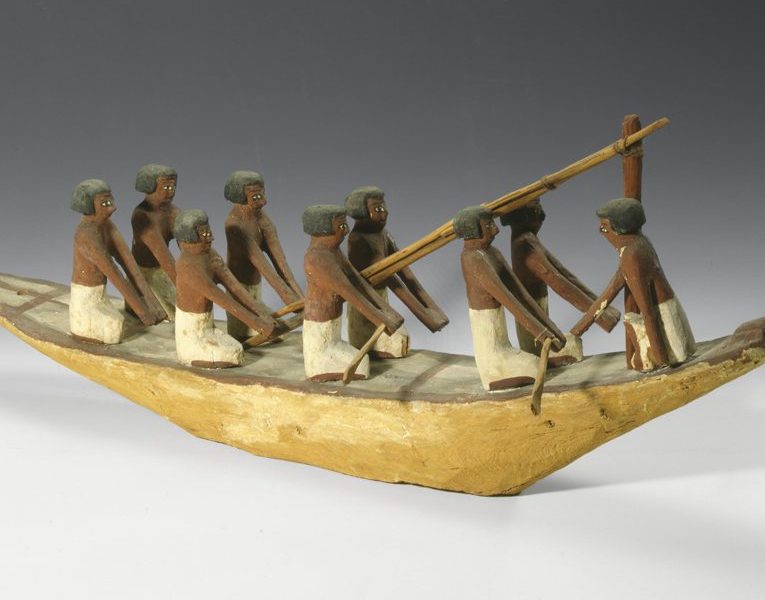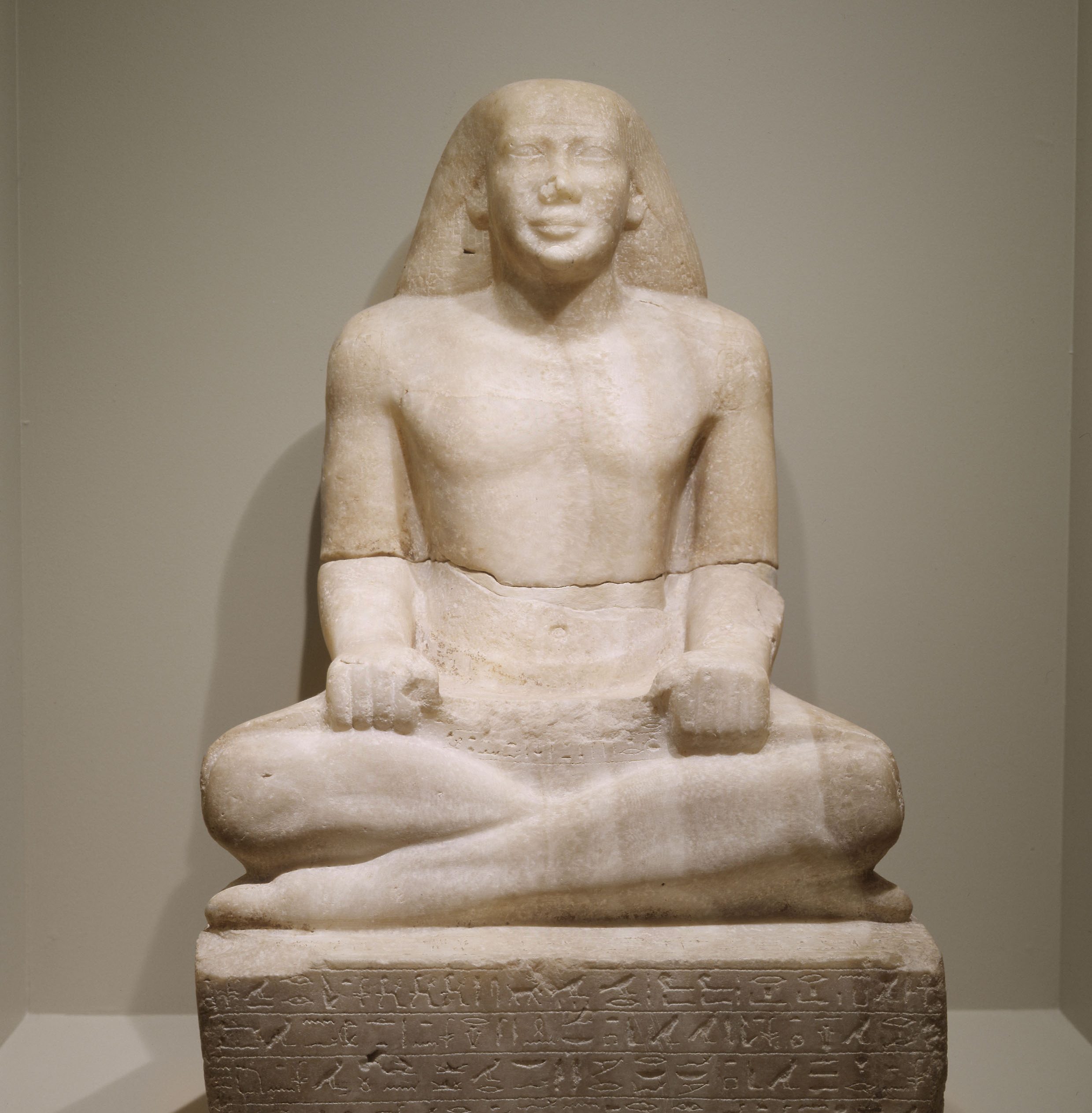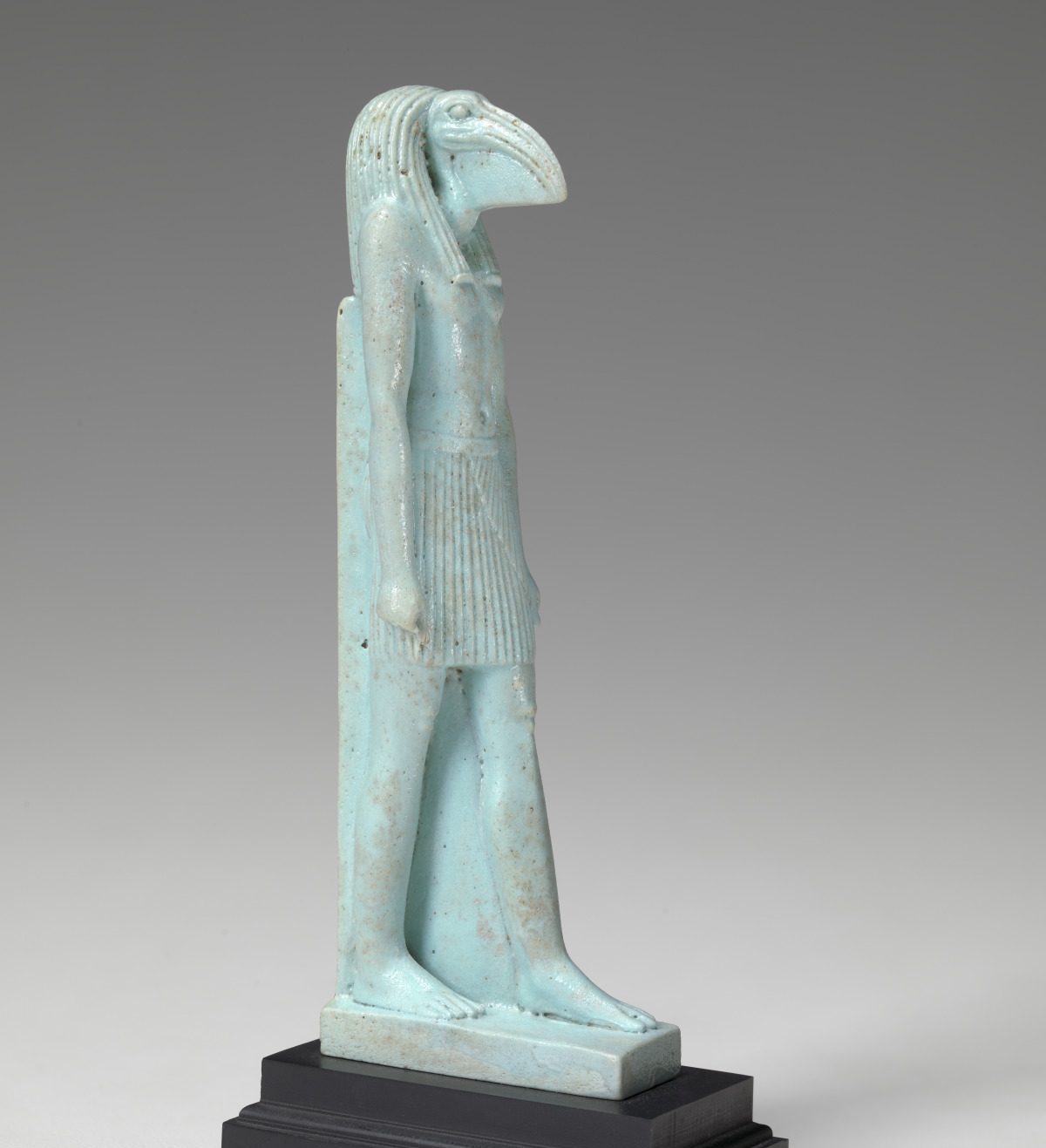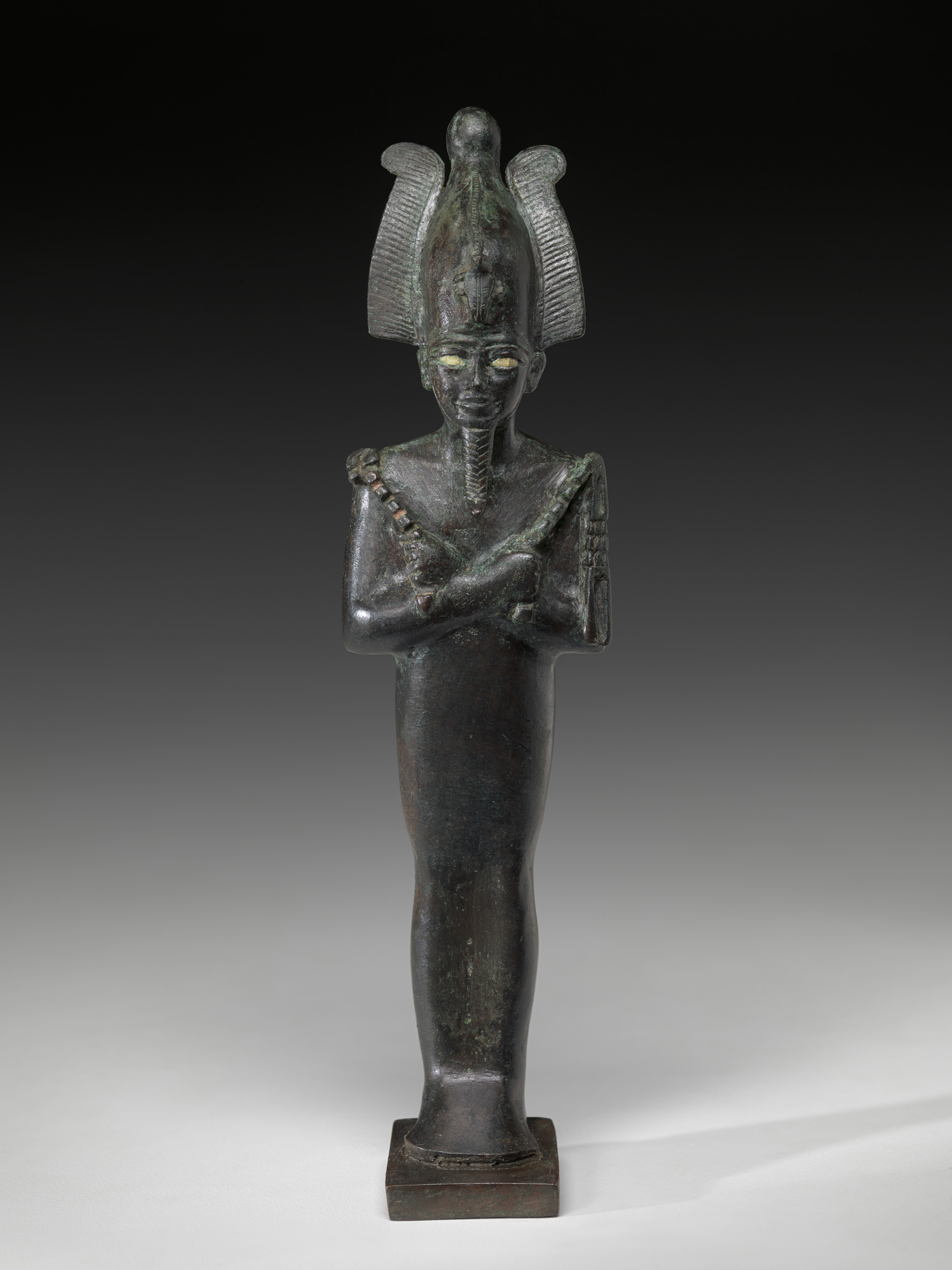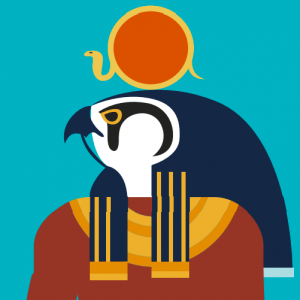
It’s Egypt!
Ancient Egyptians believed that everything they knew and experienced was part of a cycle, from the annual flood of the Nile River that nourished their land to the daily rising and setting of the sun. Even their own lives were a cycle, which moved from birth to death to rebirth. Explore more about Egyptian life!
Where is Egypt?
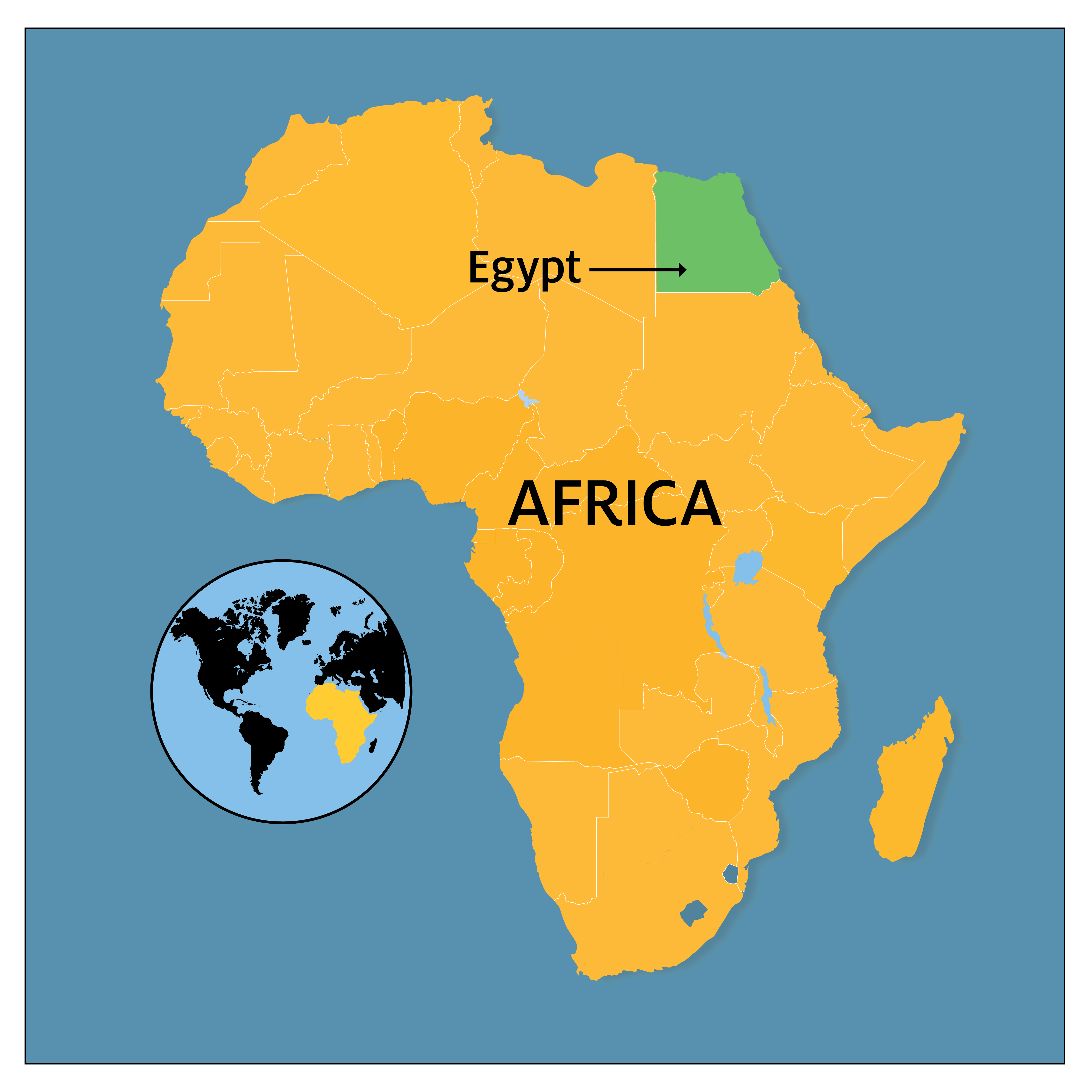
Egypt is in Africa!
Egypt is a country on the continent of Africa. Ancient Egyptian civilization developed along the Nile, one of the longest rivers in the world. Ancient Egyptians called their land kemet, which meant “black land,” after the rich soil that fed Egypt’s crops. The English name Egypt comes from the Greek name for the land, Aegyptos, after an Egyptian king in Greek mythology. Modern Egyptians call their nation Misr, an Arabic word meaning “country”. Ancient Egypt was protected by natural borders including deserts to the east and west and the Mediterranean Sea to the north.
Daily Life and the Nile
The Nile was the source of life for the ancient Egyptians. Thousands of years ago, the Nile flooded every year. When the floodwaters decreased, they left behind rich, fertile soil for farming. This cycle of flooding, crop growth, death, and regrowth helped define many aspects of daily life, including the calendar, work, transportation, food, and religion.
Today, the Aswan Dam, completed in 1970, controls the flow of water in the Nile to keep it from flooding.
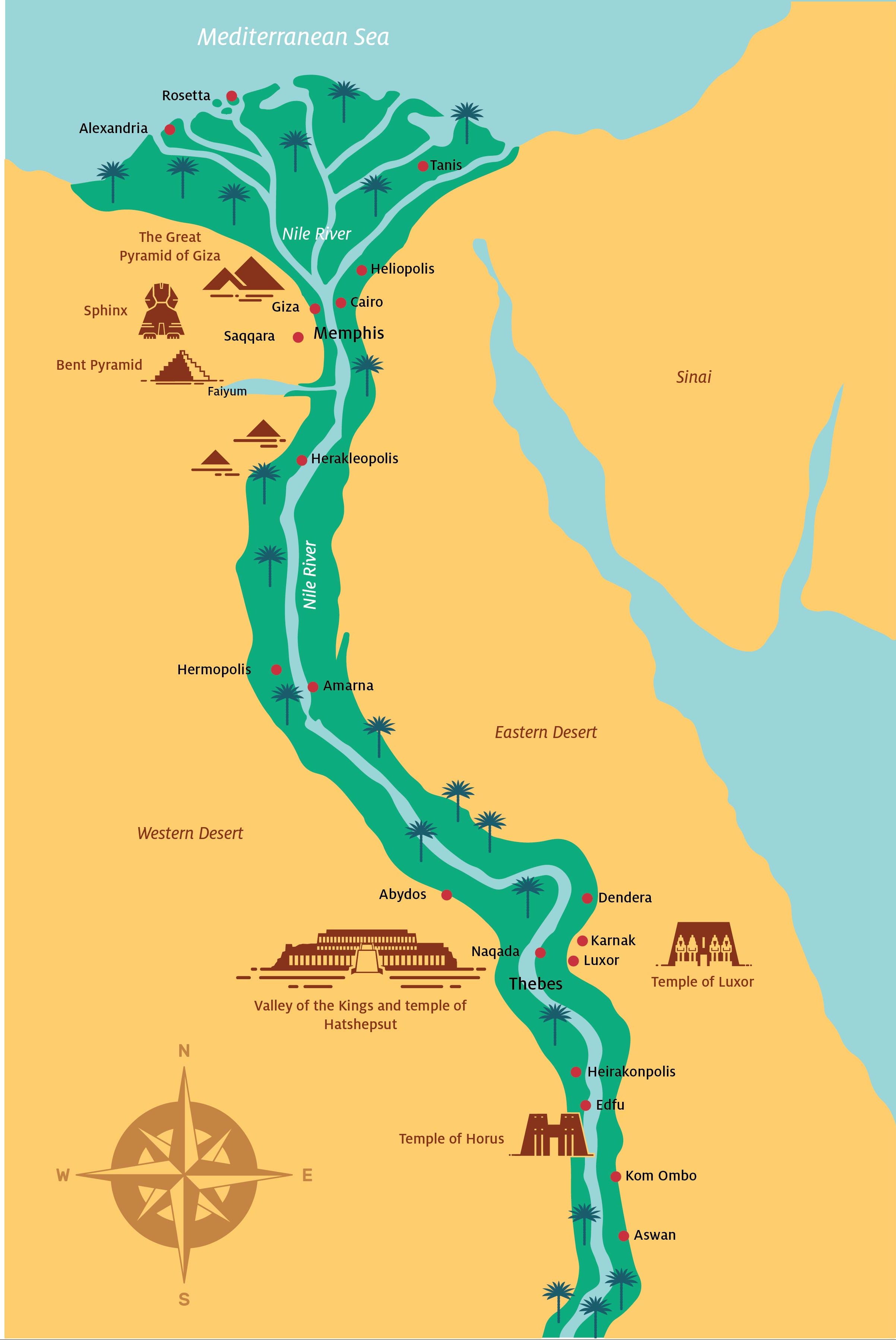
Farming and Food
In a land that was mostly desert, the most important thing the Nile provided was good soil for growing crops. The main crops were flax, papyrus, and wheat.
Flax was used to make clothing, rope, and baskets, and the papyrus plant was made into paper. Wheat provided bread, which was an important part of the Egyptian diet.
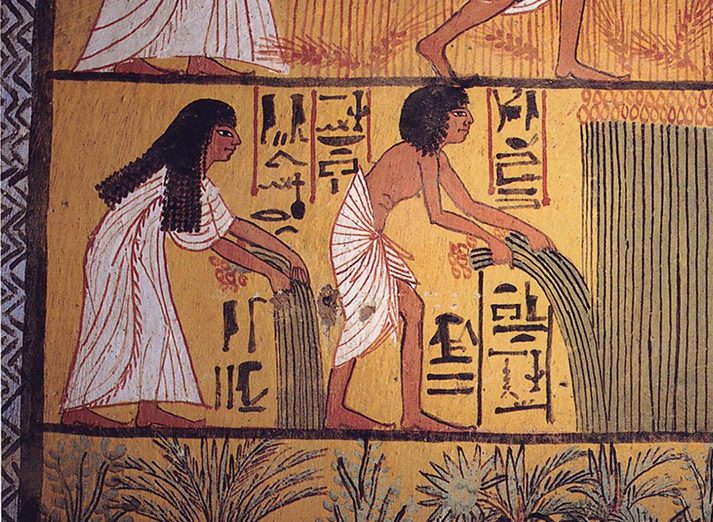
This painting from a tomb in Deir el Medina depicts farming in ancient Egypt.
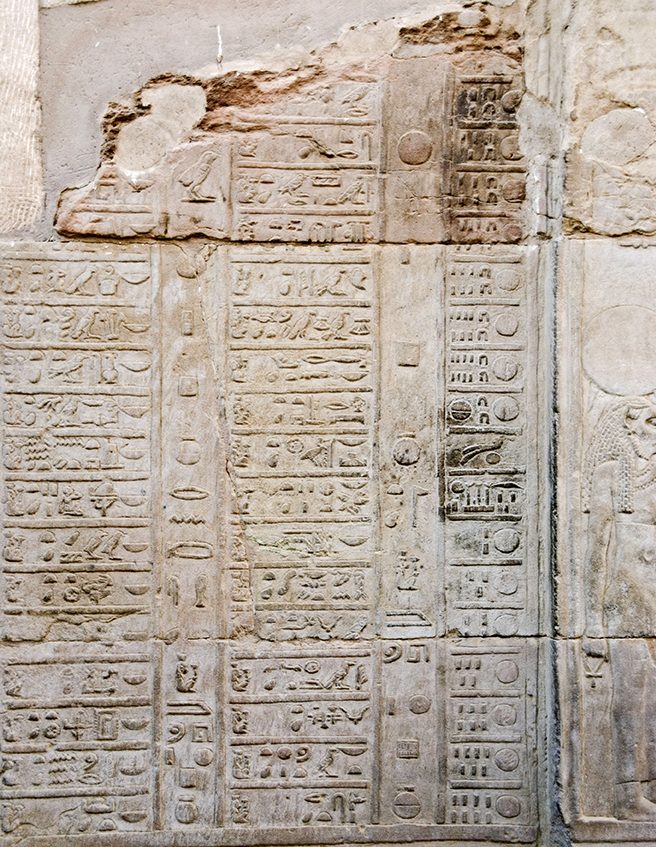
A relief of an ancient Egyptian calendar from Kom Ombo, the temple of Horus and Sobek.
The Calendar
Like our calendar, the ancient Egyptian calendar was based on a 365-day year. The Egyptian year was divided into 3 seasons based on the cycles of the Nile.
The Three Seasons:
June–September: The Inundation or Flooding Season
Fields were flooded; no farming could be done. Many farmers worked for the pharaoh (king), building pyramids or temples or going to war.
October-February: The Growing Season
Floodwaters receded, leaving behind rich, black soil. Seeds were planted.
March-May: The Harvesting Season
Crops were harvested and stored before the Nile flooded again.
Transportation
The Nile was like a highway for the ancient Egyptians. Boats carried people and trade goods along the great river. Since the Egyptians did not build many roads, most major cities were located along the banks of the Nile.
Miniature objects were often placed in tombs. The great number of boat models found in tombs reflects the Nile’s importance in Egyptian life. Many burials included two or more boat models, one for sailing upstream and another for downstream.
Hieroglyphic Writing
The Egyptian culture was among the first to invent writing. They used symbols called hieroglyphs for sounds, words, and ideas. There are over 700 hieroglyphs! This system of writing is called hieroglyphic, and the individual characters are called hieroglyphs.
Hieroglyphs represent sounds, not letters and could be written and read left to right, right to left, or top to bottom.
Scribes
Writing was a valuable skill in ancient Egypt, but not everyone could read and write. Scribes were people who were specially trained in reading and writing. They studied for many years to learn thousands of complicated hieroglyphs. Students would start training as young as six or seven years old.
This scribe is named Sematawteftnakht, and he worked for a pharaoh over 2,500 years ago. Like many scribes in paintings and other artworks, he is shown with crossed legs and holding a papyrus scroll on his lap.
Thoth
The ancient Egyptians believed that the god Thoth invented writing. The god of writing and wisdom, he was often shown with the head of an ibis bird, although he could also be depicted as a baboon. Thoth helped maintain order and balance in Egyptian life.
Egyptian Religion: Order, Balance, and Cycle
The Egyptian universe centered on a strong belief in ma’at, a word that can mean truth, justice, balance, and order. Ancient Egyptians believed that without ma’at, the world would fall apart. The pharaoh, or ruler, of Egypt, was considered the son of the god Ra and acted as a link between the people and the gods. His role was to maintain a good relationship with the gods to keep the order, or ma’at, of the universe. Ma’at allowed each day to start and the Nile to flood every year so the Egyptians could grow food.
Many stories about Egyptian gods and goddesses involve recurring cycles and attempts to maintain order and balance.
Ra and the Cycle of the Sun
Ancient Egyptians explained the cycle of the day as the actions of Ra, god of the sun. They believed Ra sailed across the sky in a boat during the day as the sun and at the end of the day, he sailed to the underworld and it became night. At dawn, after emerging from the underworld, Ra was reborn, and there was light as the sun rose. Ra’s journey into the underworld was like the soul’s journey after death into the afterlife.
Ra’s entire journey took twenty-four hours and was not always easy. Different forms of Ra ruled over different parts of the day.
Scroll through the images below to explore the parts of his journey!

Gods and Goddesses
Religion was very important to the lives of ancient Egyptians, and they worshipped hundreds of gods and goddesses. The gods and goddesses were often shown with the head of the animal that they shared powerful qualities with.
Can you match the god or goddess to the animal they look like?
The Cycle of Life: Death, Rebirth and Mummification
The ancient Egyptians believed that after people died in this world, they continued living in another world. As long as order, or ma’at, was maintained, a person could live on after death provided certain steps were taken. For example, the body had to be preserved through mummification and given everything needed in the afterlife.
Mummification was a very long and expensive process. Mummies were wrapped and placed in coffins and buried in tombs or graves.
Spells and special instructions were often written in hieroglyphs on coffins and in tombs to offer protection and ward off evil. Protective amulets, similar to lucky charms, were also sometimes wrapped with the mummy.
The images below are of VMFA’s mummy Tjeby (cheb-ee). Can you find the eyes on the coffin? The Egyptians painted these eyes on the outside of coffins so that Tjeby could see the rising sun each day. The Egyptians thought that, just as the sun is reborn every morning, people are reborn in the next world.
The First Mummy: The Story of Osiris
Osiris was once a great god-king of the living who ruled with his goddess wife Isis. Osiris’s brother, Seth, was very jealous and wanted to be king, so he made a plan to trick Osiris and become king himself.
Seth offered a beautiful chest to anyone who could fit inside it. When Osiris laid down in the chest, Seth slammed it shut and threw it into the Nile. Isis looked all over to find Osiris, but Seth found Osiris first, cut his body into pieces, and scattered them over the earth.
Isis eventually found all the pieces and put Osiris’ body back together, wrapping them in bandages, making the first mummy. Isis then used her powers to bring Osiris back to life, but Osiris left the world of the living and went to the afterlife, where he became Lord of the Underworld and God of the Dead. Ancient Egyptians hoped to be reborn into the afterlife and meet Osiris.
Test Your Knowledge of Ancient Egypt!
Take this quiz to see how much you have learned. All of the answers can be found in this resource.
Suggested Art Activities
Symbols
A symbol is something that stands for something else. Egyptian gods and goddesses are often shown with symbols that represent an important quality they have. What symbol would you choose to represent something about yourself? Draw it or write about what it stands for, or symbolizes.
Packing for the Afterlife
Objects from daily life were placed with the dead for use in the afterlife. Objects included vases for food, shoes, games, and even razors for shaving. If you were an ancient Egyptian, what objects would you take with you? Draw them or make a list!
